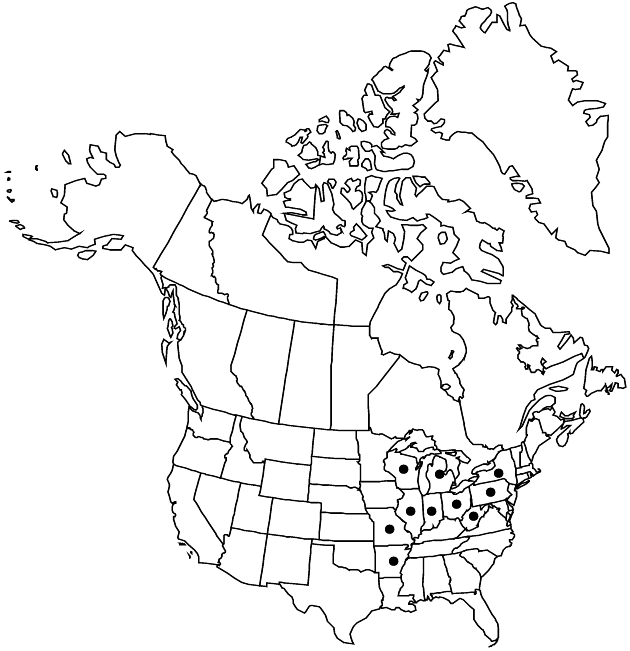Liatris scariosa var. nieuwlandii
Michigan Bot. 34: 139. 1996.
Endemic
Basionym: Lacinaria scariosa var. nieuwlandii Lunell Amer. Midl. Naturalist 2: 176. 1912 (as Laciniaria)
Synonyms: Liatris ×nieuwlandii (Lunell) Gaiser Liatris novae-angliae var. nieuwlandii (Lunell) Shinners
Plants 30–100 cm. Stems with 20–85 leaves or leafy bracts proximal to heads. Leaves: basal and proximal cauline usually narrowly lanceolate-spatulate, sometimes broader, mostly 100–500 × 25–50 (–55) mm, glabrous or hirtello-puberulent (glanddotted). Heads usually 9–20. Florets 30–80.
Phenology: Flowering Aug–Sep(–Oct).
Habitat: Prairies, glades, open woods, bluff ledges, railroads, rocky limestone soils, red clays, jack pine, pine-oak, oak-juniper, oak-hickory, aspen
Elevation: 100–500 m
Distribution

Ark., Ill., Ind., Mich., Mo., N.Y., Ohio, Pa., W.Va., Wis.
Discussion
Plants of var. nieuwlandii are usually relatively tall and have relatively numerous, even-sized, densely arranged, lanceolate cauline leaves.
Selected References
None.
Lower Taxa
None.
"barbellate" is not a number."fine" is not a number.
... more about "Liatris scariosa var. nieuwlandii"
introrse +
connate +
rounded +
scarious +
absent +
hirsute +
papillate +
racemiform +
continuous +
glabrous +
decurrent +
mostly linear;ovatelanceolate +
(4-)5-angled;10-ribbed +
hyaline +
narrow +
leafy +
proximal +
20;85 +
linear-clavate +
stigmatic +
barbellate +
12;40 +
coarse +
absent +
not 2-lipped +
equaling +
monomorphic +
8-11-ribbed +
prismatic +
4.5mm;6mm +
straight +
distinct +
proximal +
30;80 +
bisexual +
dispersed +
singly +
Prairies, glades, open woods, bluff ledges, railroads, rocky limestone soils, red clays, jack pine, pine-oak, oak-juniper, oak-hickory, aspen +
discoid +
indeterminate +
9;20 +
homogamous +
surrounding +
campanulate;turbinate-campanulate +
leafy +
alternate +
lanceolate-spatulate +
2-carpellate +
inferior +
attached +
anatropous +
persistent +
tough +
thick +
connate +
nerved +
persistent +
distinct +
falling +
unequal +
equal +
Michigan Bot. +
1996 +
absent +
epaleate +
conic;spheric;usually flat;convex +
fibrous +
exalbuminous +
modifed +
4;5 +
Endemic +
alternate +
erect +
puberulent +
2-branched +
hirsutulous +
papillate +
Liatris scariosa var. nieuwlandii +
Liatris scariosa +
variety +
perennial +